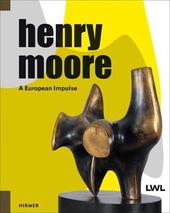
|
Henry Moore: A European Impulse
Hardback
Main Details
Description
Henry Moore has influenced the history of twentieth - century sculpture more decisively than anyone else. He was one of the first contemporary sculptors to realise his ideas in the public space throughout the world. His oeuvre was a lasting source of inspiration for an entire generation of artists - from Hans Arp, Alberto Giacometti and Pablo Picasso to the younger generation of German sculptors. Henry Moore (1898 - 1 986), known as the "Picasso of Sculpture", is regarded as one of the most important sculptors of the twentieth century and the epitome of the modern artist. Typical of his work is the interrelationship between nature and abstraction. He discovered the "voi ds", so - called openings and holes which heighten the sculptural, three - dimensional effect of his works. With this new approach Moore exercised a strong influence on younger sculptors, who gained decisive impulses from his sculptures. This volume presents M oore as the dominant personality of modern sculpture in collaboration with the members of the younger generation of artists.
Author Biography
Chris Stephens is Curator, Holburne Museum, Bath.
Reviews"Though there has been no dearth of Moore exhibitions in the last two decades, this one, as embodied in this catalogue, distinguished itself by historicizing the presence of the British artist's work in postwar Germany and considering it alongside contemporaneous sculpture and drawings by mostly German artists. . . . The visual interplay of the works illustrated, together with the remarks about them, makes a powerful argument for the prevalence of organic abstraction, primitivism, and the vestigial remains of the figurative tradition in modern European sculpture. . . . Highly recommended."-- "Choice"
|